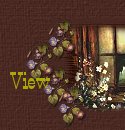
The Little House
James Gadsby
Some stories are
repeated in the articles below. I chose to leave the articles as they were written
by their authors.

![james2].JPG (34688 bytes)](james2].jpg)
By Richard Houghton of the Advocate
The whoops and hoots of Anne Gadsby at 90 years of age reverberated around
Northcott Nursing Home with surprising clarity.
The old woman was imitating the special call her father used to make at least eight
decades ago as he came along the road towards the Gadsby Lake homestead.
The story had special poignancy as she related it for the tape recorder placed on the
table in front of her. On the night in question her father, James Gadsby, one-time
famous outlaw with the Jesse James, had made a trip to town and was returning home more
than a little under the influence of alcohol. Along the road the horses got tangled
and went into the ditch with the wagon. Lying in the ditch freezing and unable to
walk, the outlaw used his special call to try and arouse his family. "I told
mother I could hear him calling from the road but she told me to go to bed and forget it
because the noise was just coyotes." "I cried because I knew it was
him," said the old woman. Later when Jim Gadsby was sober enough to walk he
managed to get home. As he came up the lane, they saw he was limping. When his
boots were removed all the toes were frozen off one foot.
The taping session seems important since Anne Gadsby is the last living member of the
family of nine born to Jim Gadsby and his Cree wife after he settled just north of Mirror.
Doris Albers, Anne Gadsby's niece and the outlaw's granddaughter who still lives on the
three and a half quarters of land originally cleared by the reformed outlaw feels the
stories are important to get on the record because they were untold for so long.
"I guess some of the family felt too ashamed to write down the stories before,"
says Mrs. Albers. "The boys were always pushing him for details about the
outlaw days and for years he wouldn't talk."
But interest in the past has been renewed in recent years with the discovery of two of
Long-Hair Jim's old guns, buried in the yard of the homestead. Dug up were a Colt.
44 and Webley .45 which the outlaw once carried with him while he and the James Gang
pillaged the American West. An aunt told Mrs. Albers she had buried the pistols, and
more than thirty years later she and her brother dug them up with the help of a metal
detector.
Born in St. Catherine's, Ont. in 1847, Jim Gadsby had increased his fame though a series
of careers before homesteading. He started out the son of a blacksmith, later
becoming a soldier, gunman, outlaw, prospector, and a cowhand.
As expert marksman, stories of his gunplay both on the open prairies and the streets of
Central Alberta communities such as Lacombe still circulate.
But one of the most intriguing stories is how the free-spirited individual smuggled a
barrel of whiskey into prohibitionist Alberta while it was under the watchful eye of the
police. Disguised as a barrel of salt, the drum arrived from Manitoba on the
Canadian Pacific Railroad at a station East of the Elbow River. But the Mounties,
never ones to be easily fooled, posted a 24-hour watch on the barrel, marked for John
Gallagher, as it sat on the station platform. With the aid of an accomplice, who
kept the police at bay, Jim crawled beneath the station platform, bored a hole through it
and the drum and siphoned the barrel's contents into five-gallon cans. However,
displaying the weakness of all good pranksters, he couldn't pass up the opportunity to be
on hand when the police discovered the barrel was empty. His laughter netted him
thirty day for "moral turpitude".
In his later life the cowboy hell-raiser turned more and more to the life of a recluse
with his books and prayers. He did so much work helping to build the St. Monica's
Anglican Church that residents had to recognize his efforts. In 1932, at the age of
85, Long Hair Jim died in Stettler Hospital.


By Darcy Henton
GADSBY LAKE-The spirit of a horseman, galloping with pearl-handled guns
a-blazing, guards this frozen lake, 150 kilometers Southeast of Edmonton.
When the winter wind whistles eerily across this two kilometer long wasteland, you can
almost see a long-haired figure rise from the eight meter depths, and charge across the
ice towards you. It's a fearsome sight.
They called him Long Hair Jim when he rode with Jesse and Frank James, but in the
communities that surrounded this small body of water where he once lived, he's known as
James Gadsby.
Those who still remember him saw only a drunken old homesteader who "ruled like a
king" the log cabin that was home to his Cree wife and nine children. But his
life is the stuff western novels are made of and his descendents claim his exploits are
recorded in Zane Grey's dusters.
Born in St. Catherines, Ont., in 1847, the son of a blacksmith, his adventures as a
soldier, gunman, outlaw, prospector and cowhand made him a living legend by the time he
was settled here.
He was a crack shot.
He told those who asked why he spent his money on ammunition that in the notorious gangs
he rode with "you had to shoot fast and straight".
"Several times I have seen him shoot the head off a prairie chicken with his 44 Colt
revolver," one friend wrote after his death.
Other friends recorded times he cleared the streets of Lacombe with his gunplay after he'd
left the James Gang to seek his fortune in North Dakota and Alberta.
One old timer wrote that when Jim was freighting between Lacombe and Lamerton, his trips
were frequently delayed "ten days or so when he failed to convince local authorities
that his efforts to create a little excitement around town were nothing but harmless
fun".
And his grandson, Pete Stevens, recollects a story about his grandfather placing six tin
cans on both sides of the road and entertaining the neighbors by riding at a gallop and in
one pass shooting every can.
But the favorite tale descendents like to relate has Jim smuggling a barrel of whiskey
into prohibitionist Alberta right under the noses of the police.
Disguised as a barrel of salt, the drum of "tangle foot" arrived from Manitoba
on the Canadian Pacific Railroad at a station east of the Elbow River.
But the Mounties got wise and posted a 24 hour watch on the barrel, marked for a John
Gallagher, as it sat on the station platform.
With the aid of an accomplice who kept the police at bay, Jim crawled beneath the station
platform, bored a hole through it and the drum and siphoned the barrel's contents into
five gallon cans.
The cowboy couldn't pass up the opportunity to be on hand when the police discovered the
barrel was empty and his laughter netted him thirty days in jail for "moral
turpitude".
Bea Parlby, 76, still shakes her head at entries in her father-in-laws diary which record
some of Long Hair Jim's deed. She notes that on one day her father-in-law, a friend
and neighbor to Mr. Gadsby, wrote that Jim and famous North West Mounted Police scout
Jerry Potts came to dinner. But nowhere could she find the reason for the visit.
Friends say the Jim Gadsby they knew would never have harmed anyone.
"He was a real gentleman. I wish I could think I was anywhere near his
quality," says 86 year old Guy Pym. He was 21 when he met Jim Gadsby.
Some say Long Hair Jim homesteaded "Amen Corner" quietly with his wife, Mary
Root and family to escape his past.
Mr. Pym says although he seldom saw Mr. Gadsby in church, the colorful neighbor was a
religious man in his actions.
In his later days he led a reclusive life of books and prayers, he says.
"He was a grandfather I never knew, but would have liked to have know," says 46
year old Stevens.
He was born in 1933, one year after Long Hair Jim died in Stettler Hospital.
But he has the impression that his grandfather didn't really fit into the community.
"I guess people were scared of him," he says.
Although he wasn't really accepted by some members of the community, he did so much work,
including helping to build St. Monica's Anglican Church, that residents had to recognize
his efforts, Mr. Stevens said.
He admits there are so many stories about his grandfather that it's hard to separate truth
from fiction.
Doris Albers of Mirror was 6 years old when her grandfather dies, but she still remembers
he always had candy for her when she went to visit him.
And it was she who solved the mystery of what happened to her grandfather's guns after he
died.
Her aunt told her she had buried two pistols on the homestead and more than thirty years
later, with the aid of her aunt's direction, her brother Pete and a metal detector, she
finally located the famous guns.
To Mr. Stevens, the Colt .44 and Webley .45 that he helped rescue from an earthen tomb
are all he has a reminder of a grandfather who was one of Alberta's most colorful
pioneers.


By Jack Wilson of The Advocate
MIRROR-The last surviving daughter of a man who rode with Jesse James was
buried here Wednesday.
Anne Gadsby, one of nine children born to Jim Gadsby, died August 30 at the age of 97.
Her grave is just a few meters from that of her father, a member of the famous gang
of outlaws headed by Frank and Jesse James.
Doris Albers of the Mirror district, Miss Gadsby's niece, shared a brief account of her
aunt's life after the burial.
Nicknamed "Jacko", Miss Gadsby helped raise her niece on the family farmstead
near Gadsby Lake while men were away during the Second World War.
"She would ride in a freezing blizzard always ready to help when there was any
sickness around. She loved to get on her horse and just go," said Mrs. Albers,
poring over a scrapbook.
"She taught me to speak Cree, and I'll always cherish that."
Miss Gadsby's father was Irish and her mother was a full-blooded Cree.
Miss Gadsby's well-know father, nicknamed "Long Hair Jim," was "quite a
character," said Mrs. Albers.
She recalled the incident which made him give up his life of crime and move to Alberta.
"One day, while tending the horses for the James gang, a couple of them were captured
by some deputies. They were tied up. They were placed near a boiling pot of
water and figured they would be boiled alive. They managed to escape and took off
with a posse chasing them."
"After getting away my grandfather said he felt he better get out of the States, so
he came back to Canada and to Alberta."
He met his wife, Mary Root, when she was forced by a white driver to walk behind a wagon
because she was an Indian.
"Jim didn't like that, so he went after that driver with a whip. The driver
took off but Mary was so impressed she jumped up with Jim and they were married that
night," laughed Mrs. Albers.
Two pistols he used during his unlawful escapades were dug up on the Gadsby farmstead in
the late 1970s.
Discovered with the help of a metal detector were a Colt .44 and a Webley .45 buried by an
aunt more that 30 years earlier. They now belong to another family member.
Before Mr. Gadsby took up a homestead, his fame as an expert marksman spread throughout
Central Alberta. At various times he was a soldier, prospector and cowhand.
Long-hair Jim died in 1932 in Stettler Hospital at the age of 85.
His daughter Anne never married but was described as "one of the happiest people I
ever knew'" said one pallbearer Walter Buelow of Mirror.
"She was a star in the district and to her family. She was always a happy,
jolly person," said Mr. Buelow.
Following the burial, Albert Saskatchewan of Hobbema said his great-aunt was buried with a
traditional Indian blanket and sweetgrass rosette, which represents a speech "from
you to the Creator."

Go here for a
more complete history about James Gadsby
 

Art for these graphics from: Mr. Behlen's
Gallery |